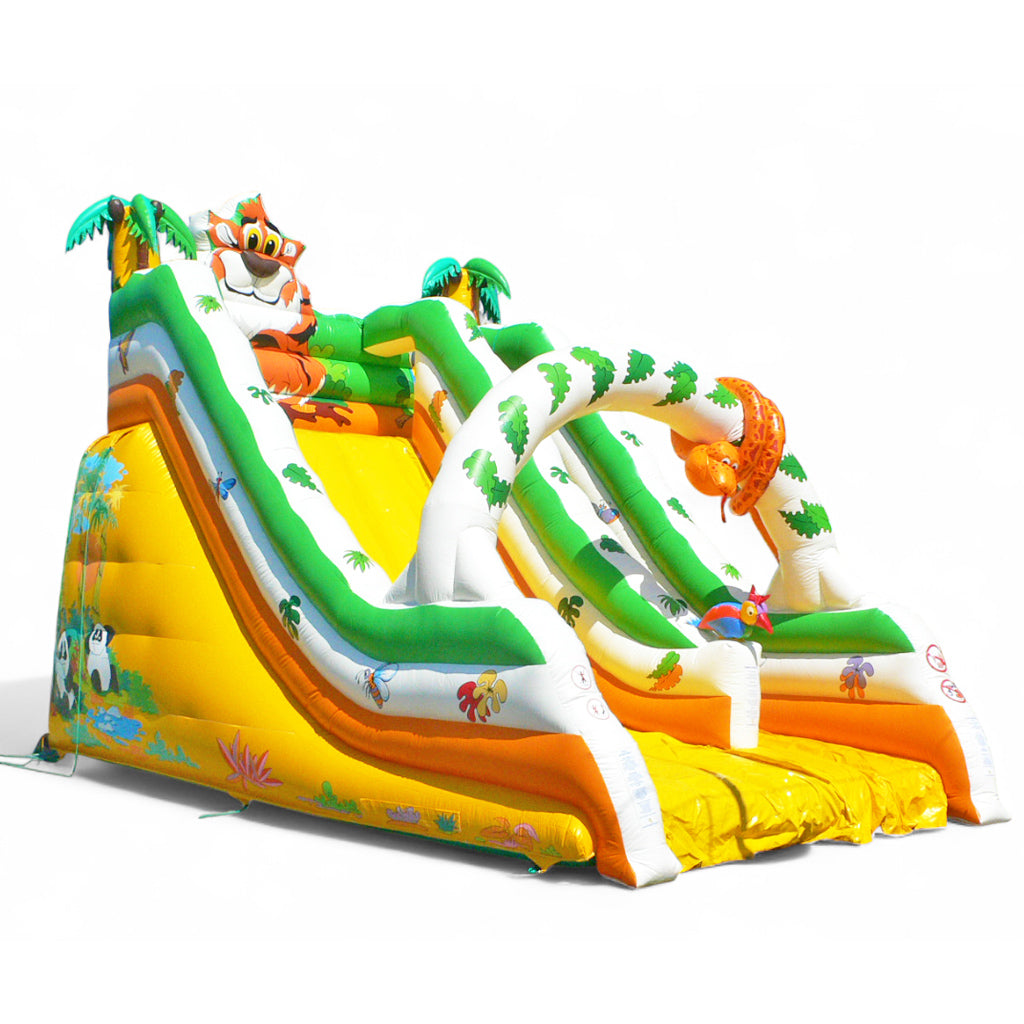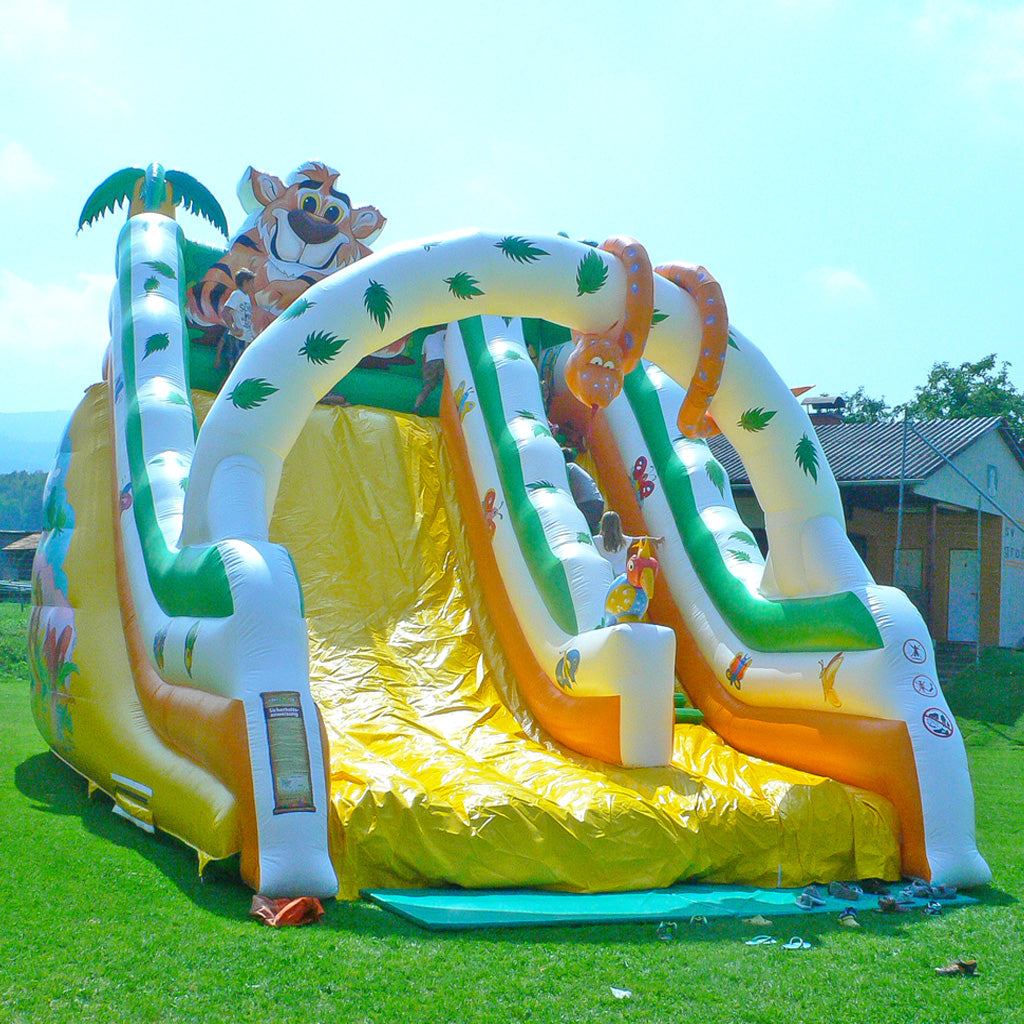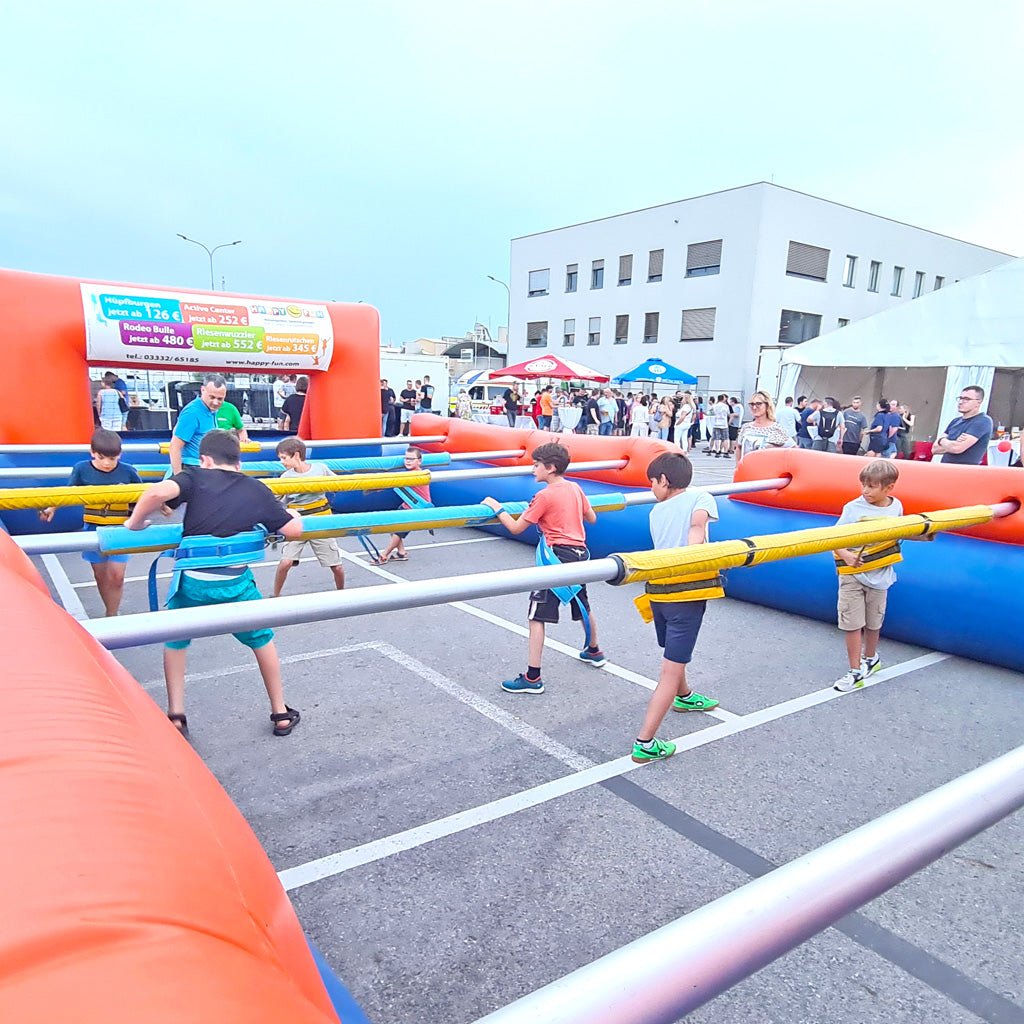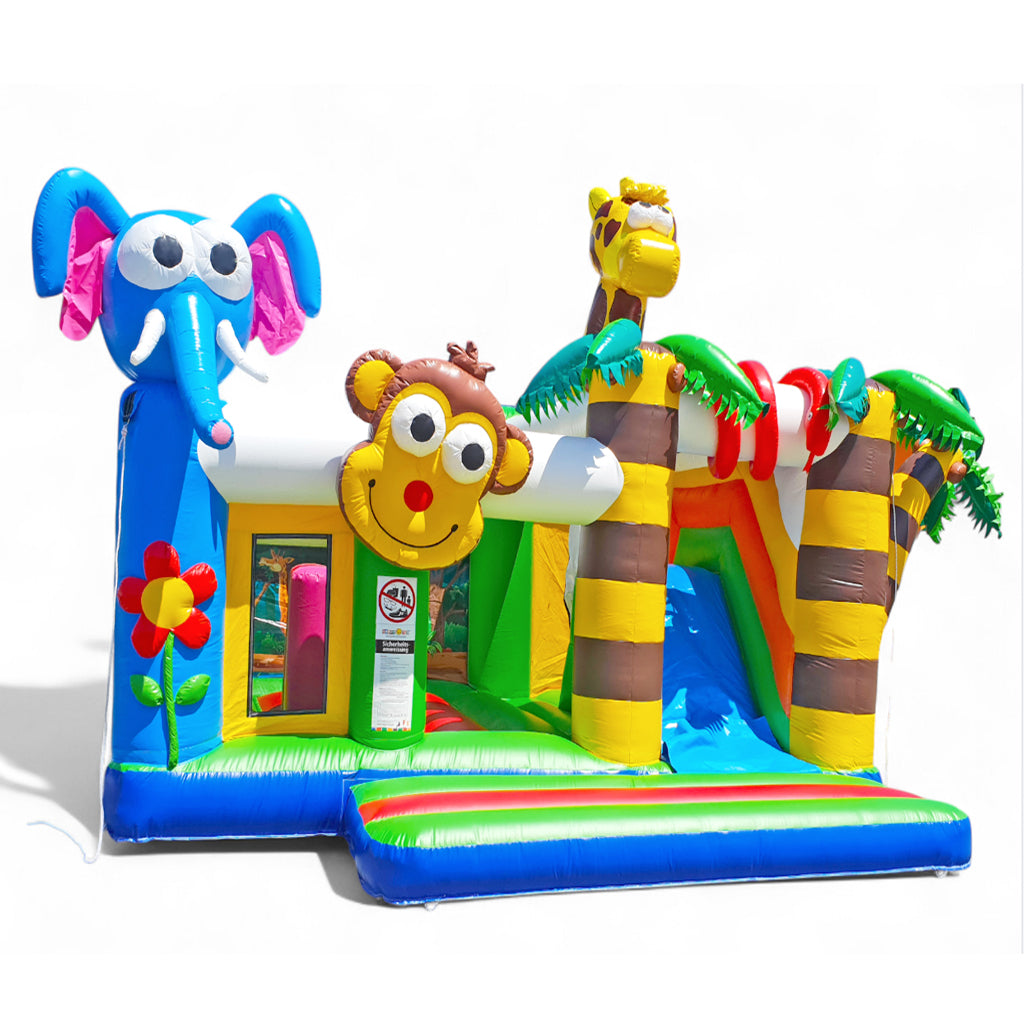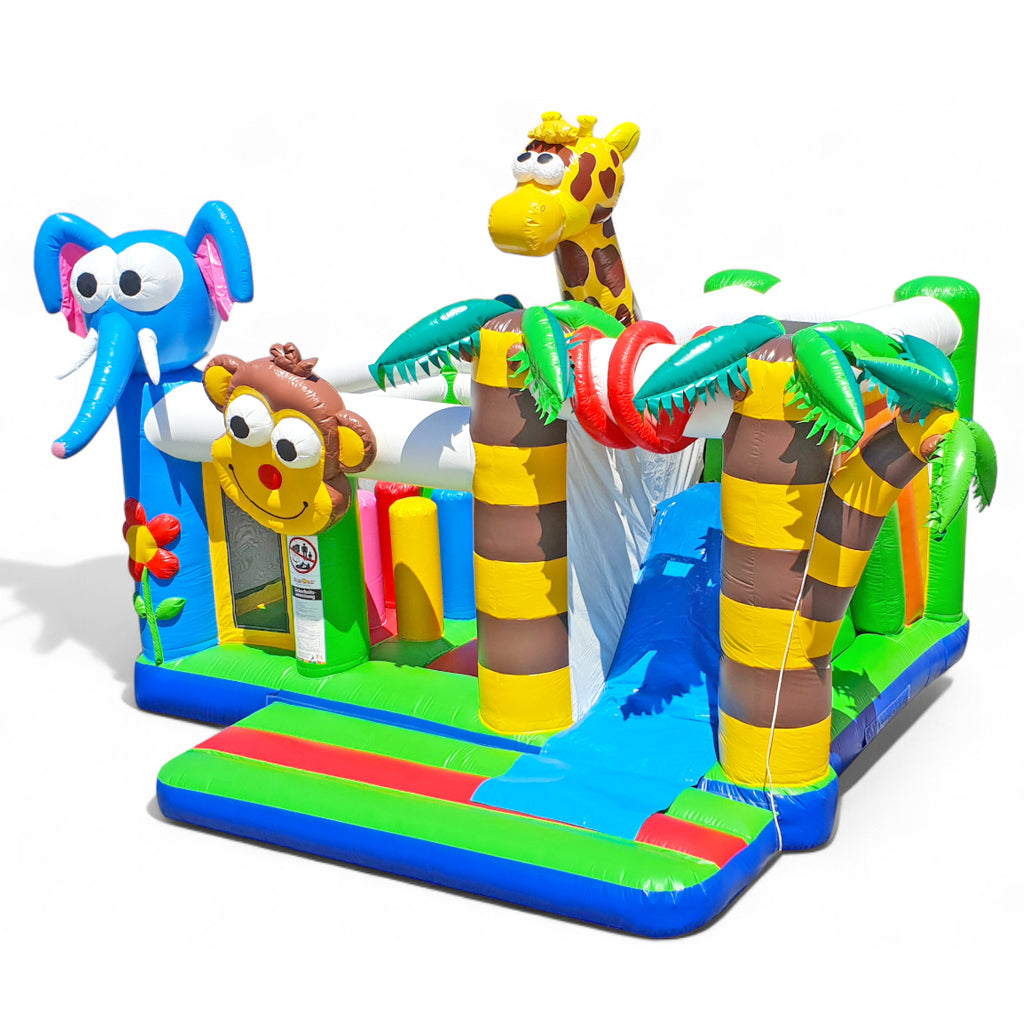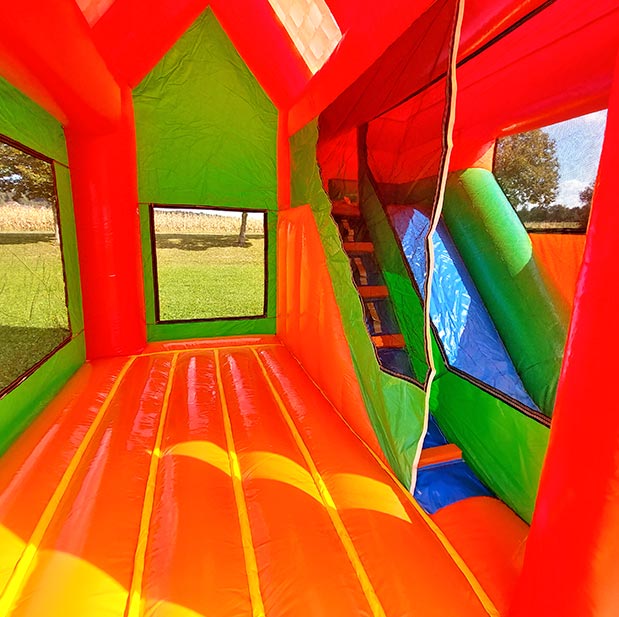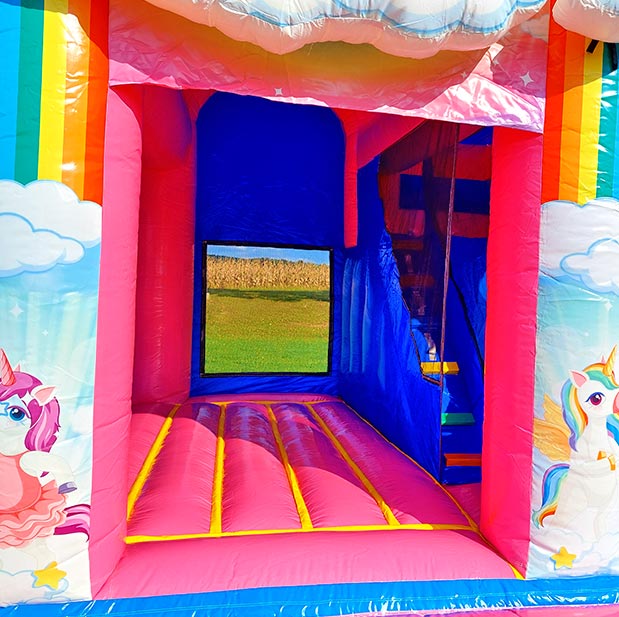Today it is impossible to imagine children's parties, city festivals and company events without bouncy castles. The colorful, air-filled play structures delight young and old - but who actually had the idea? How did the first bouncy castle come about and how has it developed over the decades?
Let's delve into the exciting history of the bouncy castle and discover how a chance observation led to global success.
The Birth of the Bouncy Castle: John Scurlock's Brilliant Discovery
The invention of the bouncy castle goes back to the American engineer John Scurlock. In 1958, he worked in Louisiana on air-filled covers for tennis courts and industrial facilities. During his experiments, he noticed that his colleagues were jumping around on the air-filled surface and were visibly enjoying themselves.
Rather than simply redeveloping the inflatable structure as a protective tarp, Scurlock saw the potential for a whole new type of entertainment device - and so the first bouncy castle was born, which he then called the "Space Pillow."
The first models were very simple and consisted only of an air-filled surface without side walls or safety nets. But as their popularity increased, the bouncy castles evolved and the names also changed over time.

The first names of the bouncy castle and their meaning:
✔ Space Pillow (1958) - The original name of the first inflatable play platform, inspired by the soft, cushion-like structure.
✔ Moonwalk (1960s) - A new name that emphasized the feeling of weightless jumping and evoked the upcoming moon landing.
✔ Jupiter Jump (1974) - An evolution with mesh walls to ensure greater safety.
✔ Astrojump (1980s) - A tribute to space travel, as bouncing in a bouncy castle is reminiscent of floating in weightlessness.
✔ Boingalow (early 1990s) - A playful name that focused on bouncy jumping.
✔ Bouncy Castle (England, 1990s) - In Britain, the bouncy castle was often referred to as the "Bouncy Castle" because many models were shaped like medieval castles.
✔ Inflatable Funhouse (USA, 1990s) - A term that was used primarily in the USA for large, interactive bouncy castles with obstacles and slides.
The variety of names shows how the concept of the bouncy castle has developed over the decades. From the simple "Space Pillow" to the now widespread "Bouncy Castle", the names reflect the fascination for weightless bouncing and the creative development of the bouncy castle.
His invention not only had an impact on the event industry: Scurlock also developed the first safety cushions, which are now used by firefighters and stuntmen worldwide.
The first bouncy castles were produced in England
While Scurlock invented the bouncy castle in the USA, its first commercial production was started in England. Companies there began to produce the first models for the market in the 1970s.
Fritz Schellnast, founder of the Happy Fun GmbH, was one of the first to bring bouncy castles to mainland Europe and establish them there. Through his work as a dealer and developer, bouncy castles spread rapidly throughout Europe and quickly became an integral part of festivals and events.
The invention of the classic bouncy castle with an inflatable floor and inflatable side walls
Another milestone in the history of bouncy castles goes back to Elisabeth Kolarik. In 1977, the Austrian invented the classic bouncy castle with an inflatable floor and three side walls.
The idea arose from a simple need: She was looking for a safe plaything for her daughter that would replace her parents' favorite way of jumping around in bed.
The first “air castle” was created through a chance encounter with a manufacturer of hot air balloons. But due to a misunderstanding, their order was made much larger than planned - instead of 3 × 4 meters, the first bouncy castle was a gigantic size of 8 × 11 meters.
This unexpected size proved to be a stroke of luck as it immediately attracted a lot of attention. The concept was quickly developed further and the bouncy castle with protective side walls was brought onto the market as a new generation.
In Austria, especially in the Vienna Prater, Kolarik used the first bouncy castles commercially and established them as a permanent attraction for children.
The first inflatable giant slide - a groundbreaking innovation: "Magic Carpet"
After the classic bouncy castle with side walls had found its place at festivals and events, the English manufacturers wanted to develop a new highlight. The first giant inflatable slide was born.
This innovation was a huge success - but there was a problem: the first slides were functional, but the constant friction while sliding led to rapid wear of the surface.
Here came the Happy Fun GmbH into the game. In collaboration with English manufacturers, the company developed the first giant slide with an interchangeable slide tarpaulin.
💡 Why was this a game changer?
✔ The sliding surfaces no longer wore out as quickly.
✔ Defective or worn slide tarpaulins could be easily replaced.
✔ The lifespan of the giant slides has been drastically extended.
This innovation made giant inflatable slides even more durable, more economical and safer - and contributed significantly to their worldwide success.
Material revolution and creative designs
With advances in materials technology, manufacturers began using durable, coated PVC and nylon for inflatables. This made them more robust, safer and able to withstand greater stress. The most robust and strong bouncy castle material was Plasticotta - a leather-look material specifically developed for bouncy castles.
Many bouncy castles made from Plasticotta still exist today. Happy Fun also used this material for a long time because it was characterized by its particular longevity and resistance.

In the 1990s the variety of designs exploded:
✔ Classic castle shapes
✔ Giant slides
✔ Obstacle courses and interactive modules
✔ Inflatable advertising - bouncy castles as an advertising medium
✔ Combination of mechanical and inflatable products such as rodeo bull riding, human table football
✔ Water slides, floating water inflatables
✔ Huge bouncy castle indoor parks
Safety & Standards: The development of EN 14960
As popularity grew, the issue of security also became more and more important. In the past, there were hardly any legal regulations for bouncy castles, which led to accidents due to improper construction or defective materials.
This was followed in Europe introduced the EN 14960 standard - a safety standard, which regulates the construction, materials and operation of bouncy castles.
💡 Fun fact:
The company Happy Fun, together with the TÜV co-designed the EN 14960 standard to improve the safety of bouncy castles across Europe.
Bouncy castles with therapeutic benefits
In addition to fun and action, bouncy castles also offer therapeutic benefits. Studies show that jumping on soft surfaces:
✔ Motor skills promotes
✔ reduces stress and the hemispheres of the brain are harmonized
✔ children with sensory impairments can help
✔ Social interaction & team spirit strengthens
Bouncy castles are now even being used in therapy centers and sports programs to help children with special needs.
Parents, organizers and operators alike rely on bouncy castles today - whether for celebrations, major events or as an integral part of amusement parks. The possibilities are almost endless, and the demand for new, creative designs is constantly growing.
Happy Fun - your expert for bouncy castles since 1985
It has been since 1985 Happy Fun GmbH a leading provider of bouncy castles and inflatable event modules. With our own production and a specialist workshop for Service and Repairs We specialize in custom-made products and inflatable advertising media.
Our range of services includes:
✔ Custom-made bouncy castles & advertising media
✔ Repair & maintenance by our specialist workshop
✔ Large event modules & bouncy castle rentals for events of all sizes
Whether individual bouncy castle, XXL giant slide or inflatable promotional products - we develop tailor-made solutions with the highest quality standards.




